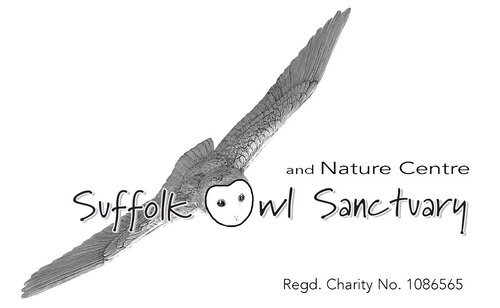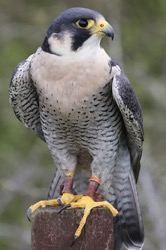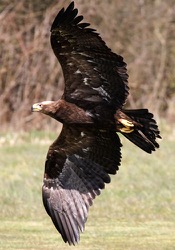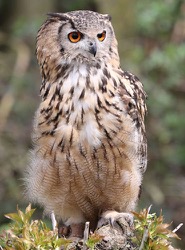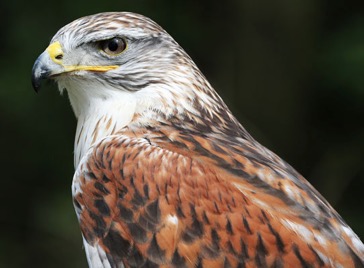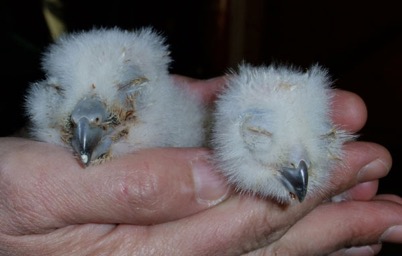We don’t often name the injured birds that come into our care for treatment but just recently a rather perplexed Tawny Owl arrived with quite a story to tell.
The young chap was found in Felixstowe caught up on - would you believe? - a ham radio arial, so it wasn't long before we broke with tradition and "Hammy" became his adopted name as we started to look after him.
The arial was the type used by CB radio enthusiasts and stands about 15 feet in height. We don’t know how the tawny managed to. but he impaled himself on it, the shaft of the mast going straight through his left wing.
Despite impaling himself on a radio mast, the local vet was able to repair the damaged wing
The poor owners of the house were obviously very upset to discover the situation when they awoke, as they found the bird in a naturally very distressed state. But without hesitation, the husband & wife team set about their own rescue mission: firstly they dismantled the framework which held the arial in place; then slowly lowered it to the ground down and finally slid poor Hammy off onto the grass. Then they covered him with a towel to enable them to safely pick him up, popped him in a box and took him straight to the local vet, who was kind enough to operate on him and stitch him back together.
Before long, friend 'Hammy' should be winging his way back to the wild
Hammy was then brought in to us where we kept him under observation and applied liberal helpings of TLC until he was ready to be placed in one of our rehabilitation aviaries. Here he has been able to fly around, so starting to rebuild the damaged muscles in his wing and - as you will see from the pictures - is now well on the road to recovery. Hopefully it won't be long before we can release him back to the wild in a fit and proper state to fend for himself again.
